It looks like you're using an Ad Blocker.
Please white-list or disable AboveTopSecret.com in your ad-blocking tool.
Thank you.
Some features of ATS will be disabled while you continue to use an ad-blocker.
share:
Sole3
reply to post by Lone12
I understand
bless you back
you are kind.
but i dont think, anyone here is understanding the danger.
Lone12
...perhaps i d affront you
by telling what the vid is about [ as if you didnt know]
...the boys, WE, saying ' we re a long way from home'
meaning Eden
..and walking through this awful Matrix,
which destroyes, with Its tactics, the one after the other of US
Oh do I ever understand the dangers that await have been trivaled already, because I have confronted evil intent and mastered it; not through a religious route, 'force of will and pure intention to rid a wide sphere'. We are a long way from home stuck by choice in material reality, so the blame is upon us for chosing this very high road of the 'ultimate' existance. The meaning is never meant as a vacation spot more of a prooving ground. This is not easy, the undertaking of the realization of 'self' and how you 'matrix' with being gross matter and yet also having an eternal forever soul, that resides outside this body. What people do not know is that you can and do live as separate beings, you split yourselves to accomodate whatever your path requires to grow. Those in body here in the flesh and bone are very special because there is no room for error..no space to accomodate the billions of other souls wishing this experience of the 3rd D. Its just not possible, and linear time is running out. I am well aware of the dangers, the boomerangs that those not aware of will be faced with. Do you imagine a fate of ignorance is a blessing while IF you are KNOWING are the most likely to suffer? I think not because research and introspection/the sharing of is key. There is no such thing as a singular voice in the desert if heard by others, and brave they are to repeat that message, yours in fact.
edit on 24-9-2013 by vethumanbeing because: (no reason
given)
Lone12
Sole3
reply to post by Lone12
I understand
bless you back
you are kind.
but i dont think, anyone here is understanding the danger.
Understanding it? Some of us, Lone12 have been living it quite a while...
I read a post on a thread today, not the first time it's been said, either...." If it bleeds, we can kill it...."
Some of us bear the scars, quite literally, and when we try to sleep, find we are not allowed any respite in this hell on earth, presently, much less when we are awake.
I understand, for one, the complete and total danger. From Argentina, to Mayan culture, to Lovecraft's "fiction," in a time and place where fiction meets reality, and technology merges the two, and ancient wisdom is supplanted and replaced by something else, in order to collapse attendant dimensions in such a way as to create hell, permanently, more so than heaven....ah, but this is subjective interpretation. Having seen both, I know the difference. But it is the character of the individual, in the end, that extrapolates which is which......
We are currently in an "identity soup," where what is evil wishes us to be, to thwart any ability, whatsoever, for those who would see through to get through and over the constant pain and punishment herein.....
Appreciate your thread. Do not know any longer how to fight.
Tetra50
Just... wow! Wide eyed and mystified here, lol.
All I can say is thanks for compiling such extensive information. I'd be further back in the dark than I already am, were it not for the internet and souls like yours. Or would certain things conspire to help me learn this stuff, even if the internet was not available? I like to hope so.
Um... so, I guess I've been "through the ringer" so many times in this existence that my brain has broken, and I just don't care anymore. Lol, yeah... I'm like, bring it on, whatever happens. I'm just over itall! UGH!
This has been the most stimulating thing I've read in so long. My brain/soul/consciousness feels so refreshed... which is very cool. Yay! Thanks!
Wish I wasn't so lost in the valley... so deperate to get to the top of the mountain. Hearing all these fabulous tails of what can be experienced, and feeling intuitively the whole truth of such tails, yet I'm blind... deaf... and crippled. Which is why I've had to shrug my shoulders and say, "F' it!"
But then threads like these spark my interest... and darn it if the desire doesn't return. Gah... it's a form of torture and a form of ecstasy all wrapped into one, haha.
All I can say is thanks for compiling such extensive information. I'd be further back in the dark than I already am, were it not for the internet and souls like yours. Or would certain things conspire to help me learn this stuff, even if the internet was not available? I like to hope so.
Um... so, I guess I've been "through the ringer" so many times in this existence that my brain has broken, and I just don't care anymore. Lol, yeah... I'm like, bring it on, whatever happens. I'm just over itall! UGH!
This has been the most stimulating thing I've read in so long. My brain/soul/consciousness feels so refreshed... which is very cool. Yay! Thanks!
Wish I wasn't so lost in the valley... so deperate to get to the top of the mountain. Hearing all these fabulous tails of what can be experienced, and feeling intuitively the whole truth of such tails, yet I'm blind... deaf... and crippled. Which is why I've had to shrug my shoulders and say, "F' it!"
But then threads like these spark my interest... and darn it if the desire doesn't return. Gah... it's a form of torture and a form of ecstasy all wrapped into one, haha.
...allright
next chunk :
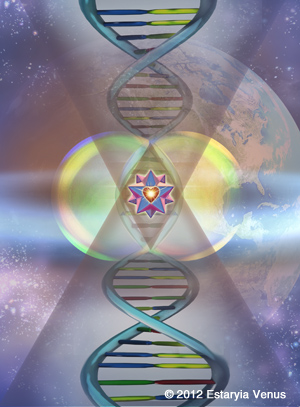
[skip the DNA strings, thats nonsense - couldnt find a better picture]
..the star-tetrahedron in the centre, is the human heart chakra: in the centre of the chest
it is Fueled by the upper triangle [ coming from the precession]
and below is the triangle to the Inner earth red sun
..the yellow area is the areas of the Auras , surrounding human :
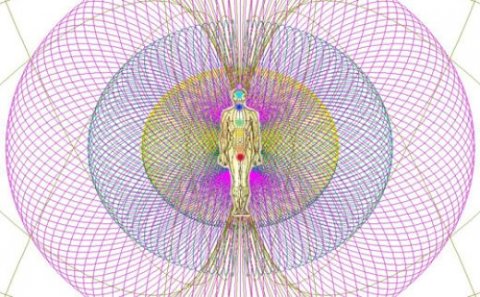
next chunk :

[skip the DNA strings, thats nonsense - couldnt find a better picture]
..the star-tetrahedron in the centre, is the human heart chakra: in the centre of the chest
it is Fueled by the upper triangle [ coming from the precession]
and below is the triangle to the Inner earth red sun
..the yellow area is the areas of the Auras , surrounding human :


showing how the "above, so below" is centred in the heart chakra
[ next to the REAL physical heart - see below]
an even better picture,
showing You the centre, and surrounding layers of chakras :

note the instreaming energy in the north -
the energy is forming a Torus -
expanding sideways -
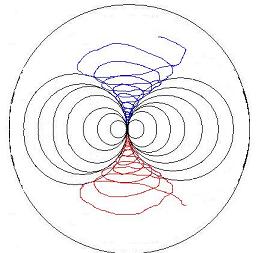
..kind of working like a welder s arch -
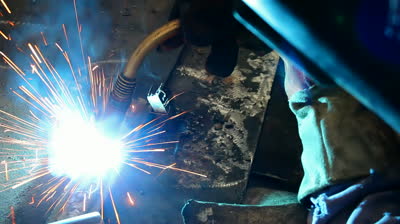
expanding sideways -

..kind of working like a welder s arch -

..now here s the clue: the [physical] heart is NOT A PUMP
meaning,
the blood is Flowing by a Vortex energy,
and the heart is a BRAKE
..controlling that circular flow of blood inside the body
- it is this heart-chakra Centre Point,
which is rotating, spinning,
which Causes the flow of Blood inside the body -
and the heart is but a Brake, to Regulate that Flow
"..The history of the pressure propulsion premise goes back to Galileo and Leonardo da Vinci. The concept of the heart functioning as a pressure pump that forces the blood, assumed to be amorphous and inanimate, into its vessels and taking on the shape of its vessels was suggested by Borelli 1, a student and a close friend of Galileo, who observed the spiraling heart and compared its function to wringing the water out of a wet cloth. Borelli did not confirm his conjecture with experiments but was supported by misleading drawings of the left ventricle found later in Leonardo's work. In Leonardo's Notebooks the left ventricle wall was shown to be of uniform thickness as one expects to find in a pressure chamber. (See Fig. 1-A.)
However, quite the contrary, the left ventricle wall thickness varies by about 1800%, as we found by dissecting bovine hearts. The thickness ranges from 0.23 cm in the apex to 4.3 cm in the equatorial area. The apex wall is so soft and weak that it can be pierced with the index finger. The peculiar variability in the ventricular wall thickness is not in keeping with the idea of the heart being a pressure generator. However, one could conceive of such a wall configuration as maximizing the moment inertia with no static pressure in the ventricle.The thin, flexible, cone shaped apex and suspension from the aorta suggest the accommodation of a twisting function especially, when taking into account the spiral orientation of the myocardial muscle layers2. "
..moreover,
even the blood itsélf flows in vortex way:
"
Bremer 9 performed a remarkable series of observations of blood circulation in the very early chick embryo before the formation of the heart valves. He described the two streams of spiraling blood with different forward velocities in the single tube stage heart. Nevertheless, the blood is noted to have a definite direction of flow within the conduits and moves without an apparent propelling mechanism.These streams spiral around their own longitudinal axes and around each other. The streams appear to be a considerable distance apart, do not fill their vessels, and appear to be in discontinuous segments. "
all quotes from
www.rsarchive.org...
- many similar sites can be found on this 'heart is not a pressure pump ', so dont let you to be affronted by this specific site -
meaning,
the blood is Flowing by a Vortex energy,
and the heart is a BRAKE
..controlling that circular flow of blood inside the body
- it is this heart-chakra Centre Point,
which is rotating, spinning,
which Causes the flow of Blood inside the body -
and the heart is but a Brake, to Regulate that Flow
"..The history of the pressure propulsion premise goes back to Galileo and Leonardo da Vinci. The concept of the heart functioning as a pressure pump that forces the blood, assumed to be amorphous and inanimate, into its vessels and taking on the shape of its vessels was suggested by Borelli 1, a student and a close friend of Galileo, who observed the spiraling heart and compared its function to wringing the water out of a wet cloth. Borelli did not confirm his conjecture with experiments but was supported by misleading drawings of the left ventricle found later in Leonardo's work. In Leonardo's Notebooks the left ventricle wall was shown to be of uniform thickness as one expects to find in a pressure chamber. (See Fig. 1-A.)
However, quite the contrary, the left ventricle wall thickness varies by about 1800%, as we found by dissecting bovine hearts. The thickness ranges from 0.23 cm in the apex to 4.3 cm in the equatorial area. The apex wall is so soft and weak that it can be pierced with the index finger. The peculiar variability in the ventricular wall thickness is not in keeping with the idea of the heart being a pressure generator. However, one could conceive of such a wall configuration as maximizing the moment inertia with no static pressure in the ventricle.The thin, flexible, cone shaped apex and suspension from the aorta suggest the accommodation of a twisting function especially, when taking into account the spiral orientation of the myocardial muscle layers2. "
..moreover,
even the blood itsélf flows in vortex way:
"
Bremer 9 performed a remarkable series of observations of blood circulation in the very early chick embryo before the formation of the heart valves. He described the two streams of spiraling blood with different forward velocities in the single tube stage heart. Nevertheless, the blood is noted to have a definite direction of flow within the conduits and moves without an apparent propelling mechanism.These streams spiral around their own longitudinal axes and around each other. The streams appear to be a considerable distance apart, do not fill their vessels, and appear to be in discontinuous segments. "
all quotes from
www.rsarchive.org...
- many similar sites can be found on this 'heart is not a pressure pump ', so dont let you to be affronted by this specific site -
- please look again :

..and imagine the Energy Field of the several chakras as the Torus, surrounding the centre point
now dont that remind you of earths false Torus, matrix...?]
..the 'breathe of life' eh ?
which all those deities claim to have given to this physical frame ?
and we asked "how come, they are residing in the LUNGS ?
- because that is where the heart-chakra is Centered
..that is why those entities 'go out' only by 'breathing' or sighing, or coughing, or choking
in fact,
this entire physical frame is Off-Centred,
since the *real* human Being is "right in Front of his physical frame"
[since this physical frame is but an Image]
..the image of the Beast..

..and imagine the Energy Field of the several chakras as the Torus, surrounding the centre point
now dont that remind you of earths false Torus, matrix...?]
..the 'breathe of life' eh ?
which all those deities claim to have given to this physical frame ?
and we asked "how come, they are residing in the LUNGS ?
- because that is where the heart-chakra is Centered
..that is why those entities 'go out' only by 'breathing' or sighing, or coughing, or choking
in fact,
this entire physical frame is Off-Centred,
since the *real* human Being is "right in Front of his physical frame"
[since this physical frame is but an Image]
..the image of the Beast..
649b. nehem en ef tju em o khefeti ek
it will happen because it (Second Sight) has taken you away from your Illusion (before the brow),
649c. nedj en ef tju em nedjedj em ter ef
it will happen because it (Second Sight) has inquired into you (before the brow), as one who is inquired into in his season,
649d. ma en geb qed ek de en ef ku em set ek
it will happen because the Ring of the Soul has seen your form (before the brow), it will happen because it (the Ring) has set you in your place (before the brow),
650a. pedj en en ek heru khefeti ek cher ek utet ir ef peri en ek em bah ef
it will happen because Second Sight has stretched out for you your Illusion under you, for you are older than it (Second Sight), it will happen because you have levitated (before the brow) earlier than it,
650b. tjut it en heru utetj su em ren ek en utetj
for you are the father of Second Sight who begets it in a tunnel mouth for that of yours (before the brow) for a begetter,
650c. khenet ib en heru kher ek em ren ek en khenet imenetiu
so that the Center of Gravity of Second Sight is in front, near you in a tunnel mouth for that of yours (before the brow) for that (Center of Gravity) which is in front of the Atlanteans. "
....note the 'tunnel mouth',
the same as 'the opening of the mouth' Ritual by the mummies
[ment to sustáin this matrix - not to 'escape it']
..and Gods promise to Joseph "I will give you the opening of the mouth"[ to conquer it]
somehow,
there s a "star" in " front of the brow",
which is about "the face"
"seeing the face"
this 'star' is, in Evils terminology, "Atum"
...and in biblical terminolgy " the star of your god remphan"
or
"chiun, the star of your god"
it will happen because it (Second Sight) has taken you away from your Illusion (before the brow),
649c. nedj en ef tju em nedjedj em ter ef
it will happen because it (Second Sight) has inquired into you (before the brow), as one who is inquired into in his season,
649d. ma en geb qed ek de en ef ku em set ek
it will happen because the Ring of the Soul has seen your form (before the brow), it will happen because it (the Ring) has set you in your place (before the brow),
650a. pedj en en ek heru khefeti ek cher ek utet ir ef peri en ek em bah ef
it will happen because Second Sight has stretched out for you your Illusion under you, for you are older than it (Second Sight), it will happen because you have levitated (before the brow) earlier than it,
650b. tjut it en heru utetj su em ren ek en utetj
for you are the father of Second Sight who begets it in a tunnel mouth for that of yours (before the brow) for a begetter,
650c. khenet ib en heru kher ek em ren ek en khenet imenetiu
so that the Center of Gravity of Second Sight is in front, near you in a tunnel mouth for that of yours (before the brow) for that (Center of Gravity) which is in front of the Atlanteans. "
....note the 'tunnel mouth',
the same as 'the opening of the mouth' Ritual by the mummies
[ment to sustáin this matrix - not to 'escape it']
..and Gods promise to Joseph "I will give you the opening of the mouth"[ to conquer it]
somehow,
there s a "star" in " front of the brow",
which is about "the face"
"seeing the face"
this 'star' is, in Evils terminology, "Atum"
...and in biblical terminolgy " the star of your god remphan"
or
"chiun, the star of your god"
"..the centre of gravity is Off.."
*pondering*
....we still dont knów what is 'gravity'...
apart from insane theories as 'gravitons'
..there was this experiment, in a mine shaft, forgot who did it,
and it showed 'gravity is NOT centered to the middle of inside earth'
as newtonian ' laws ' would predict
then;
if its Off
then why the entire Milky Way Ring shouldnt be "off"..?
standing 24 degrees Off Centre ?
didnt Thoth brag about "the magical aspects of the paralellogram"?
why was thoth - in his female aspect, Sechet - so Obsessed with the "plumbline"?
why God showed Ezechiel the new temple [ new earth]
constantly using the "plumbline" ?
dont that mean, that something is Off-centre, right now ?
...and therefore Spelled ?
*pondering*
....we still dont knów what is 'gravity'...
apart from insane theories as 'gravitons'
..there was this experiment, in a mine shaft, forgot who did it,
and it showed 'gravity is NOT centered to the middle of inside earth'
as newtonian ' laws ' would predict
then;
if its Off
then why the entire Milky Way Ring shouldnt be "off"..?
standing 24 degrees Off Centre ?
didnt Thoth brag about "the magical aspects of the paralellogram"?
why was thoth - in his female aspect, Sechet - so Obsessed with the "plumbline"?
why God showed Ezechiel the new temple [ new earth]
constantly using the "plumbline" ?
dont that mean, that something is Off-centre, right now ?
...and therefore Spelled ?
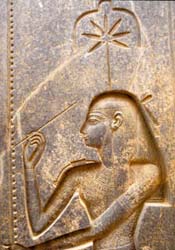
"... In CT spell 10, Seshat is said to open the portal of the netherworld for the deceased, in which we may understand the ‘portal’ in question to be the successful mastery of ritual under Seshat’s guidance. A similar interpretation can be assumed for phrases such as “your mother Seshat clothes you,” (CT spell 68). Again, when Seshat is invoked to help build a mansion in the netherworld for the deceased (e.g., CT spell 709)
...clothes you.....
now that sound much like "joshua being given new clothes" in Zechariah
"joshua" representing the 144.000
" Seshat holds the string which is used to mark out the structure’s perimeter. This ritual, called the “stretching of the cord,” expresses her grasp of all the subtle forces that must be harmonized in order for the sacred structure to fulfill its function "
[note the 7 chakras, above her head, and the Inverse dome over them: implying "imprisonment of the chakras"]
i say,
this cosmos is Off-Centre, at present.
oh i see -
the ' inverse dome' is ofcourse ' this false Precession'
the ' inverse dome' is ofcourse ' this false Precession'
now,
[forgive You me for telling]
2006, a4round these days - end september -
He showed another world; just above this one ;
i saw my physical body Dead below me,
and the other, gorgious world, was like 10 inches above me
... i have, ever since,
become totally assured,
that "Eden" was another Dimension - virtually Overlapping THIS one
[ or, perhaps, " this reality is Off "....? ]
if you imagine,
a line [ of energy] going from the chest till "6 inches before the brow"
[ as the pyramid texts claim]
..then doesnt this seem like "imbalance"?
24 degrees Off ?
help me here ?
[forgive You me for telling]
2006, a4round these days - end september -
He showed another world; just above this one ;
i saw my physical body Dead below me,
and the other, gorgious world, was like 10 inches above me
... i have, ever since,
become totally assured,
that "Eden" was another Dimension - virtually Overlapping THIS one
[ or, perhaps, " this reality is Off "....? ]
if you imagine,
a line [ of energy] going from the chest till "6 inches before the brow"
[ as the pyramid texts claim]
..then doesnt this seem like "imbalance"?
24 degrees Off ?
help me here ?
i m phrasing so poorly
- i m sorry
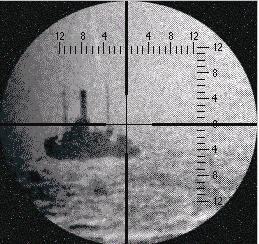
our ' reality' is being Spelled
because its Off-centre
- not "the star tetrahedron" should be the breath of life
but FEMALE
shé is the heart, the centre
"... I will give you a new heart and put a new spirit in you; I will remove from you your heart of stone "
the new heart is His Female
10 inches in Front of this lousy frame
- i m sorry

our ' reality' is being Spelled
because its Off-centre
- not "the star tetrahedron" should be the breath of life
but FEMALE
shé is the heart, the centre
"... I will give you a new heart and put a new spirit in you; I will remove from you your heart of stone "
the new heart is His Female
10 inches in Front of this lousy frame
new topics
-
Of course it was DEI
Dissecting Disinformation: 9 hours ago -
2nd Day Thanksgiving!...(leftovers!!)
General Chit Chat: 11 hours ago
top topics
-
Of course it was DEI
Dissecting Disinformation: 9 hours ago, 6 flags -
2nd Day Thanksgiving!...(leftovers!!)
General Chit Chat: 11 hours ago, 3 flags
active topics
-
Of course it was DEI
Dissecting Disinformation • 11 • : TzarChasm -
V.P. Kamala Harris releases a video and nobody understands why
US Political Madness • 102 • : anned1 -
I thought Trump was the existential threat?
World War Three • 124 • : andy06shake -
Mass UAP events. DC. Machester Airport, UFOs over sub base in CT, Nuke bases.
Aliens and UFOs • 26 • : CosmicFocus -
Unidentified Flying Objects Over U.S. Military Bases in Northeast UK, as of roughly 11 a.m. CST.
Aliens and UFOs • 34 • : bastion -
Post A Funny (T&C Friendly) Pic Part IV: The LOL awakens!
General Chit Chat • 7850 • : KrustyKrab -
-@TH3WH17ERABB17- -Q- ---TIME TO SHOW THE WORLD--- -Part- --44--
Dissecting Disinformation • 3417 • : brewtiger123 -
2nd Day Thanksgiving!...(leftovers!!)
General Chit Chat • 6 • : DontTreadOnMe -
New Disney Star Wars Films Failing Test of Time?
Movies • 18 • : Popoll -
The Party of Peace - Trump Cabinet Picks Targeted with Death Threats
US Political Madness • 51 • : RazorV66

